12 Mar 2021
Statistics
Domestic undergraduate applications and offers at semester 1 closing 2021
The Universities Admissions Centre (UAC) processed domestic undergraduate applications for 25 institutions in 2020-21, mainly in NSW and the ACT. Applications for tertiary study in 2020–21 opened on Wednesday 1 April 2020 and semester 1 applications closed at midnight on Friday 5 February 2021.
UAC received 81,621 domestic applications for undergraduate study in the 2020–21 admissions year, 5,618 (7.4%) more than this time last year.
A total of 110,135 offers were made to these applicants.*
*Note: There are more offers made than there are applicants because, even though applicants can only receive one offer in each offer round, they can receive an offer in more than one round. Read more at Offers FAQ.
Applications and offers by applicant type
Applicants are divided into four types: NSW Year 12, ACT Year 12, interstate and International Baccalaureate Year 12, and non-Year 12.
For the Year 12 groups (NSW, ACT, Interstate and IB), the numbers have increased compared with last year.
The number of non-Year 12 applicants has grown again, with 3,328 more non-Year 12 applicants applying in this cycle compared with last year.
Applications by applicant type
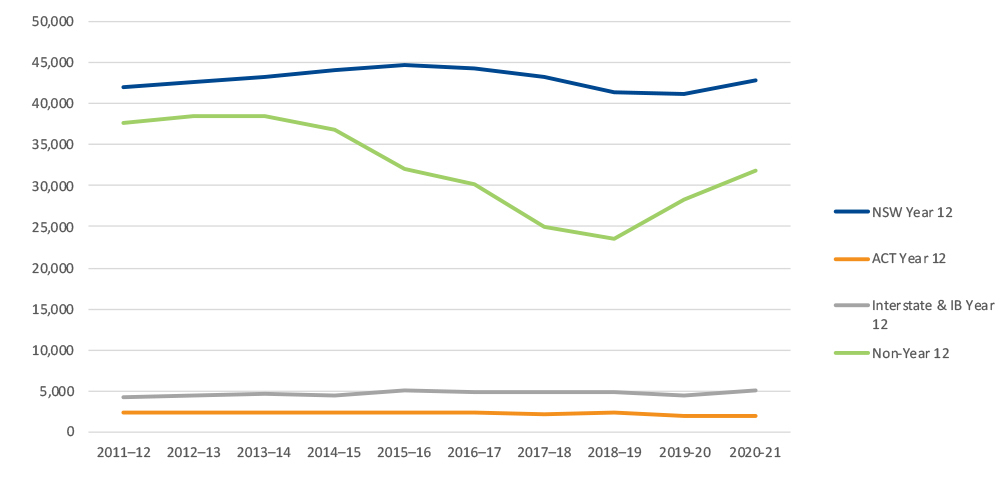
The following chart shows total offers by applicant type up until the release of final semester 1 offers (Thursday 4 March 2021) for the last 10 admissions periods.
Offers by applicant type
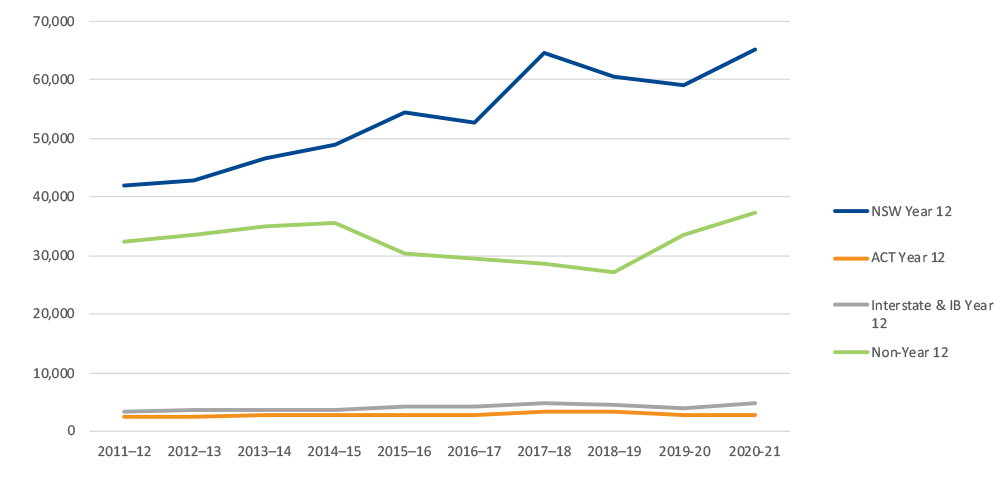
Gender analysis
The gender split of applicants was similar to the previous year: 57 per cent of Year 12 applicants were female, while 58 per cent of non-Year 12 applicants were female.
Age analysis
Almost all Year 12 applicants in 2020-21 were 19 years old and under (99.7%). Around 72 per cent of non-Year 12 applicants were 24 years old and under. The breakdown by age group for non-Year 12 applicants is shown in the following chart.
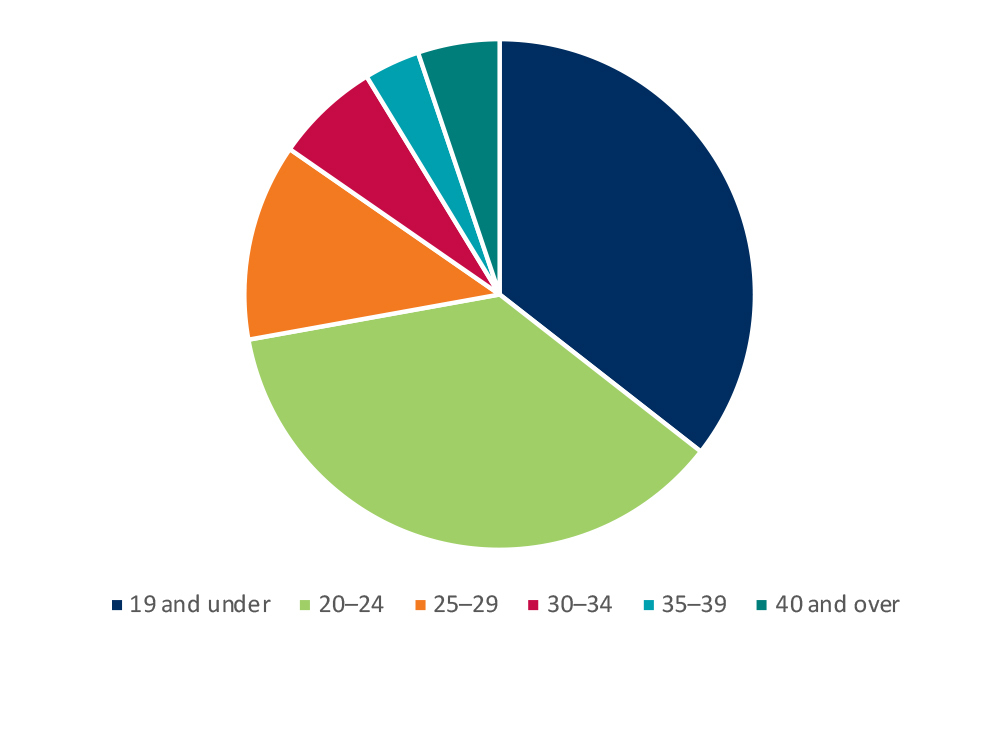
First preference analysis
Domestic undergraduate applicants can choose up to five course preferences. Their first preference is the course they would most like to study.
First preference by field of study and applicant type
The top five fields of study listed as first preferences by NSW and ACT Year 12 applicants were almost identical. Both groups had most first preferences in Society & Culture and Health.
For non-Year 12 and interstate and International Baccalaureate Year 12 applicants, most first preferences were in Health, followed by Society & Culture.
Overall, Health has once again taken the top spot as the favoured field of study, with 28 per cent of UAC’s 2020–21 applicants listing it as their first preference, slightly higher than last year. Society & Culture received 22 per cent of first preferences across all applicant types. Identical to last year.
First preferences by field of study
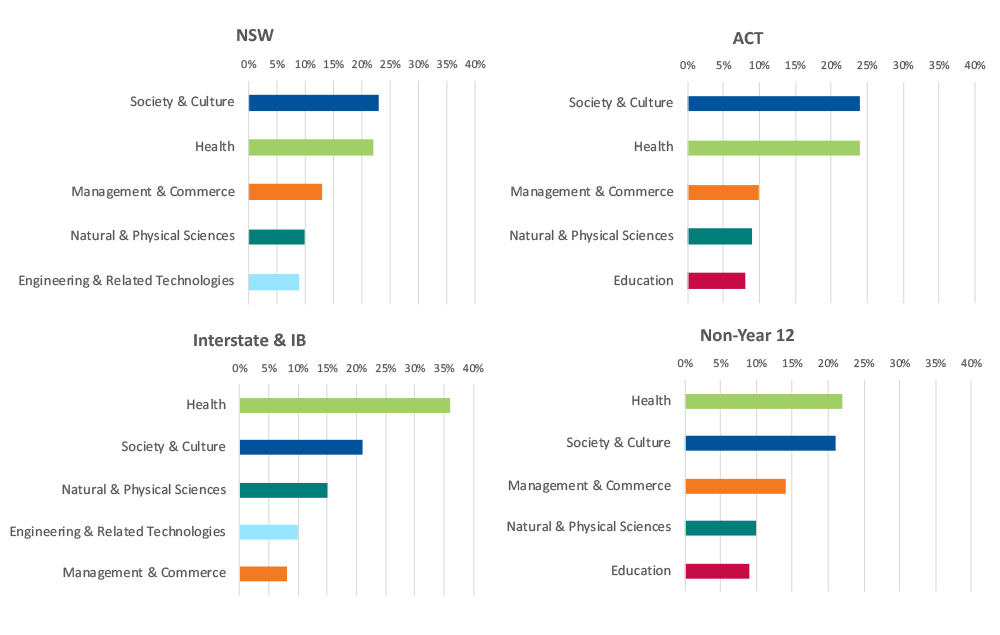
Offers by field of study

First preference by field of study and gender
While both females and males had most first preference courses in Health, the spread of first preference courses across fields of study was more even for males than for females.
Over half of female applicants listed their first preference course in either Health (34%) or Society & Culture (25%). In contrast, popular fields of study for males included Health (20%), Society & Culture (18%), Management & Commerce (15%), and Engineering & Related Technologies (14%).
Compared with males, a smaller proportion of females had first preference courses in Engineering & Related Technologies, Management & Commerce, and Information Technology.
Field of study of first preferences by gender
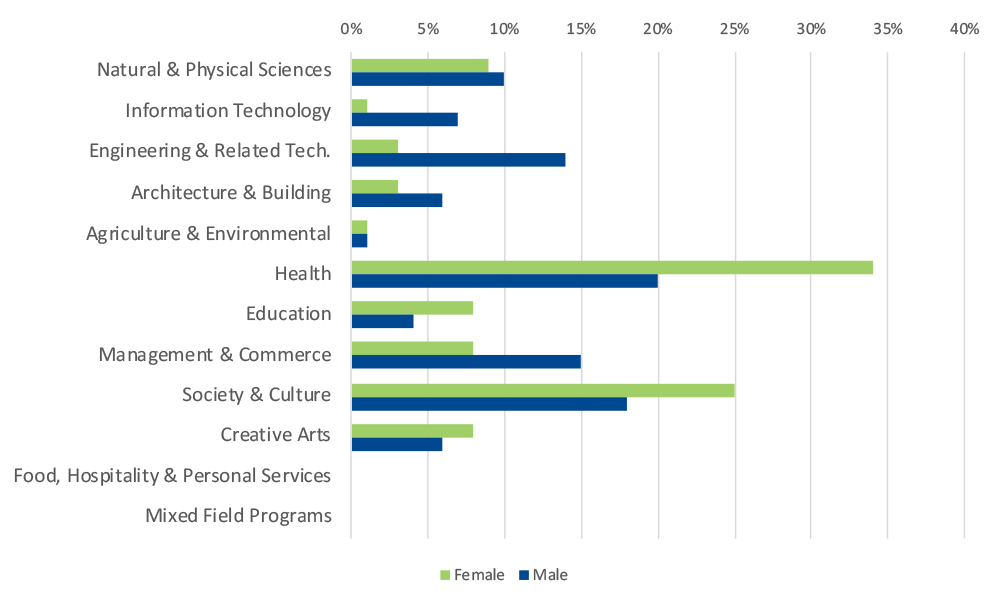
Visit UAC’s statistics pages for more application and offer data.